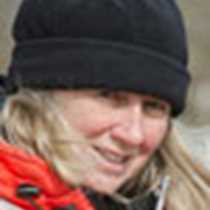Phnom Penh, Cambodia
One should never describe a day with a negative word but then again how can one ignore it either? Fortunately the vagaries of the English language might give us an out so that to say “oppressive” might be okay. Synonymous with this depressing term we discover the adjective “overwhelming.” And overwhelming it certainly was. Sights and sounds brought new stimuli to our senses, not in snippets but in volumes.
Early morning is always the time to stand quietly on the deck, coffee or tea in hand. Returning to the city after even just a few days in rural regions takes some adjusting to. The Mekong still flowed beneath our feet as the ship “walked” toward the pier using the anchor and the current to get us near. The long narrow boats of the fisherman still clustered where the fish were best and in their silhouettes we could read what the motions meant. Toss the light nylon net into the stream or reel it in by hand. In the background, not trees lined the bank but concrete embankments and houses. The clank, clank of a hammer seemed out of place when what we were expecting was a peaceful sunrise.
We plunged into the frenzy. Forty “cyclos” headed for town, each of us borne into the rush-hour traffic where motorbikes and SUVs competed with ox carts and us. One wonders if toddlers in strollers feel as we did sitting in our “chairs” pushed in front of frantically pedaling bicyclists.
The Royal Palace too was overwhelmingly ornamented, filled with riches in both the monetary sense and with visual rewards. Colorful tiles patterned the rooftops that reached skyward with pillars and graceful arcs. A solid emerald Buddha, translucent and glowing, almost was lost in the metallic sheen of the Silver Pagoda.
Trees and shrubs in various shades of green were decorated with spring blossoms, a touch of nature to ground us to the earth. It was tempting to simply sit beneath the nearest in the shade, for each and every movement felt as if the air compressed around us. Water poured from our bodies and clothing became limp and sticky. The heat and humidity were oppressive, at least to those of us from northern climes. But we do learn fast. Hand fans are almost as effective as air conditioners and those who had left theirs behind vowed never to repeat the omission. Fortunately cold water awaited us on the bus each and every time we returned.
One wonders if the National Museum was painted to match the blooming plumeria at its entrance or if that particular tree was planted to enhance the traditional color. Inside we learned to tell pre-Angkorian statues from those of the Angkorian period by looking at the head-dress, “skirt” and posture. Once the capital was moved to Phnom Penh sandstone was difficult to obtain and the carvers turned to wood as their raw material.
One cannot visit Cambodia however and simply keep one’s mind in the distant past. Less than forty years ago the city we visited today became a ghost town overnight and the cruelty of that era is and should be uncomfortable to us all. It is a warning of just how frightening the human race can be. We hear of the “killing fields” but the reality is hard to imagine until you stand upon the land of one of the more than 380 known. Fragments of bone emerge beside the paths with tattered clothing remnants. We as visitors feel shock and sadness. Our hosts have learned resilience. They are the survivors and they put their minds to the future, building a better and safer place for their children and their children’s children. A fabulous presentation by Dr. Jean Michel Fillippi from the University of Phnom Phen helped us understand this history.
Evening was the time for light entertainment, to go back to our original meaning and find a positive to end the day. An Indian barbecue on the deck with very talented Apsara dancers sent us to bed with pleasant memories in our head.



